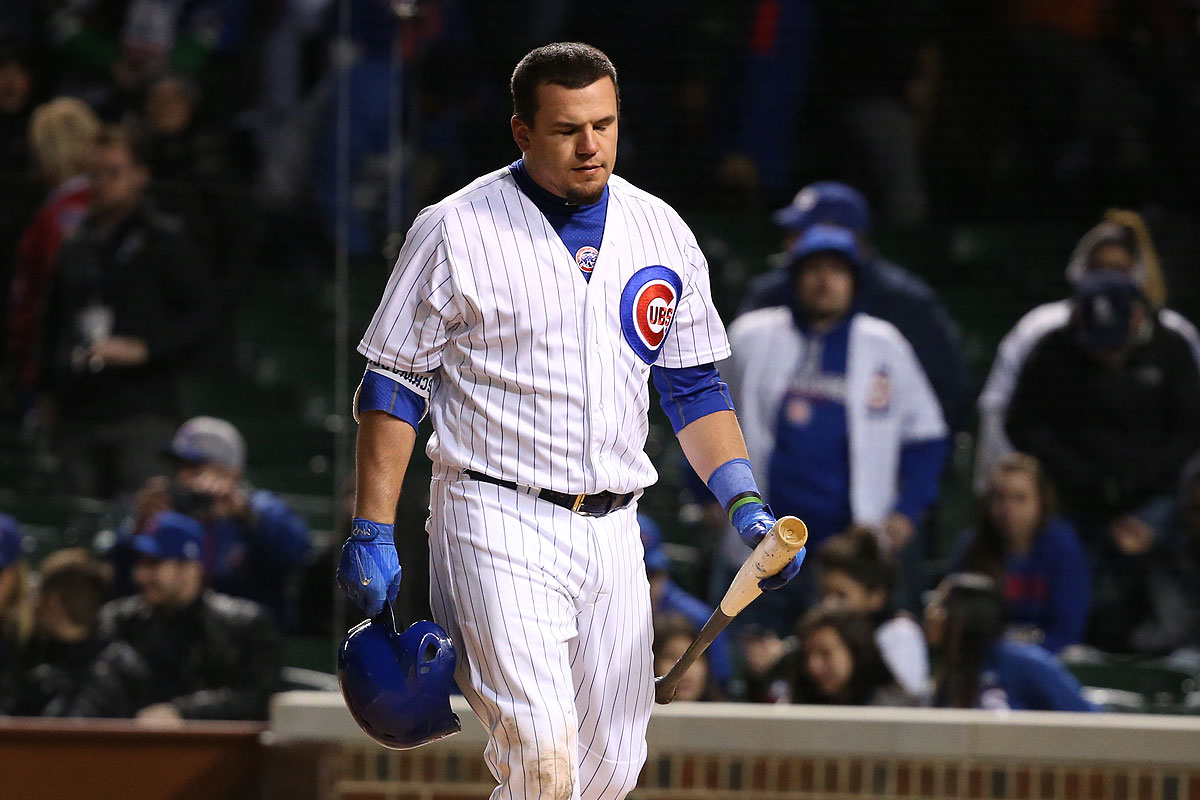The Cubs are 16-15 this year, in third place in the NL Central and just one win better than the .500 White Sox. Even expecting some falloff from last year's transcendent season, one of the best in modern baseball history, it's a surprise from a team that suffered only one major downgrade (Dexter Fowler to John Jay) and had a full season of its talented youngsters to look forward to.
What's going on? The first place to look is the Cubs' most astonishing statistic from last year: their batting average on balls in play while on defense, a somewhat mysterious and seemingly obscure number that observers marveled at last year. The idea is pretty simple: when hitters put the ball in play, that contact will turn into hits with some predictability. Some teams will have great defenses that will prevent some of those balls from falling for hits; some teams will have pitchers that limit good contact, but it'll fall within a range. The 2016 Cubs had some combination of skill or luck that kept a freakish number of balls in play from becoming hits:
Last year’s Cubs allowed a .255 batting average on balls in play, in a season when the league as a whole (Cubs included) averaged .298. The gap between the Cubs and the team with the second-best BABIP (the Blue Jays, at .282) was greater than the gap between Toronto and the 27th-place team. As FanGraphs’ Jeff Sullivan wrote last September, the Cubs’ BABIP allowed was last season’s “most extraordinary team statistic.”
Actually, it was extraordinary by any season’s standards: Relative to the rest of the league, the Cubs were better at preventing hits than any team has ever been.
In that piece, the Ringer's Ben Lindbergh calculates that the Cubs' BABIP luck/skill earned them thirteen wins compared to a league-average BABIP, the difference between an uncommon 100-win-plus team and a merely good 90-win team.
This year the Cubs have a BABIP of .289, merely 14th-best in the league. The Reds, currently in first place in the division, have the lowest BABIP in baseball.
Lindbergh, writing before the season began, suggested a couple ways that number could go up, particularly the return of Kyle Schwarber to the outfield and the replacement of Fowler with Jay. And that might be part of the puzzle. Jay and Schwarber are putting up a range of negative fielding numbers, and while Jay has been a net positive because of his hitting (.327/.437/.402, though with an unsustainable .413 BABIP), Schwarber's hitting under .200 and not putting the ball in the air as much, leading to an isolated-power number that's behind Starlin Castro.
Another way of looking at it is the Cubs' ERA versus their FIP, or fielding independent pitching, which is an attempt to isolate a pitcher's performance from his defense, which he can't control. Last year the Cubs had an ERA of 3.15; the second-best team was the Nationals, with an ERA of 3.52, an immense difference. But their FIP was a merely good 3.77, and their xFIP, another way of calculating it, was 3.74.
This year, their ERA is 3.93, their FIP is 4.06, and their xFIP is 3.75. Whatever combination of luck and skill that made the team so magical at preventing runs isn't there so far this year.
All this might be survivable if the Cubs were replicating their superlative performance at the plate last year, but they're not. Last year they were one of the best offensive teams in baseball. So far in 2017, with several key players off their expected pace—Rizzo, Russell, Schwarber, Zobrist, Contreras—they're in the middle of the pack.
It's early; the Cubs are better than this, particularly on offense, where five of their regulars are likely to hit better than they are right now. They're a good team in a weak division, and there are bright spots: Wade Davis has been outstanding, and Albert Almora and Carl Edwards Jr. have been impressive. There's no reason not to think they won't make October again—but probably not as the juggernaut they were last year.



